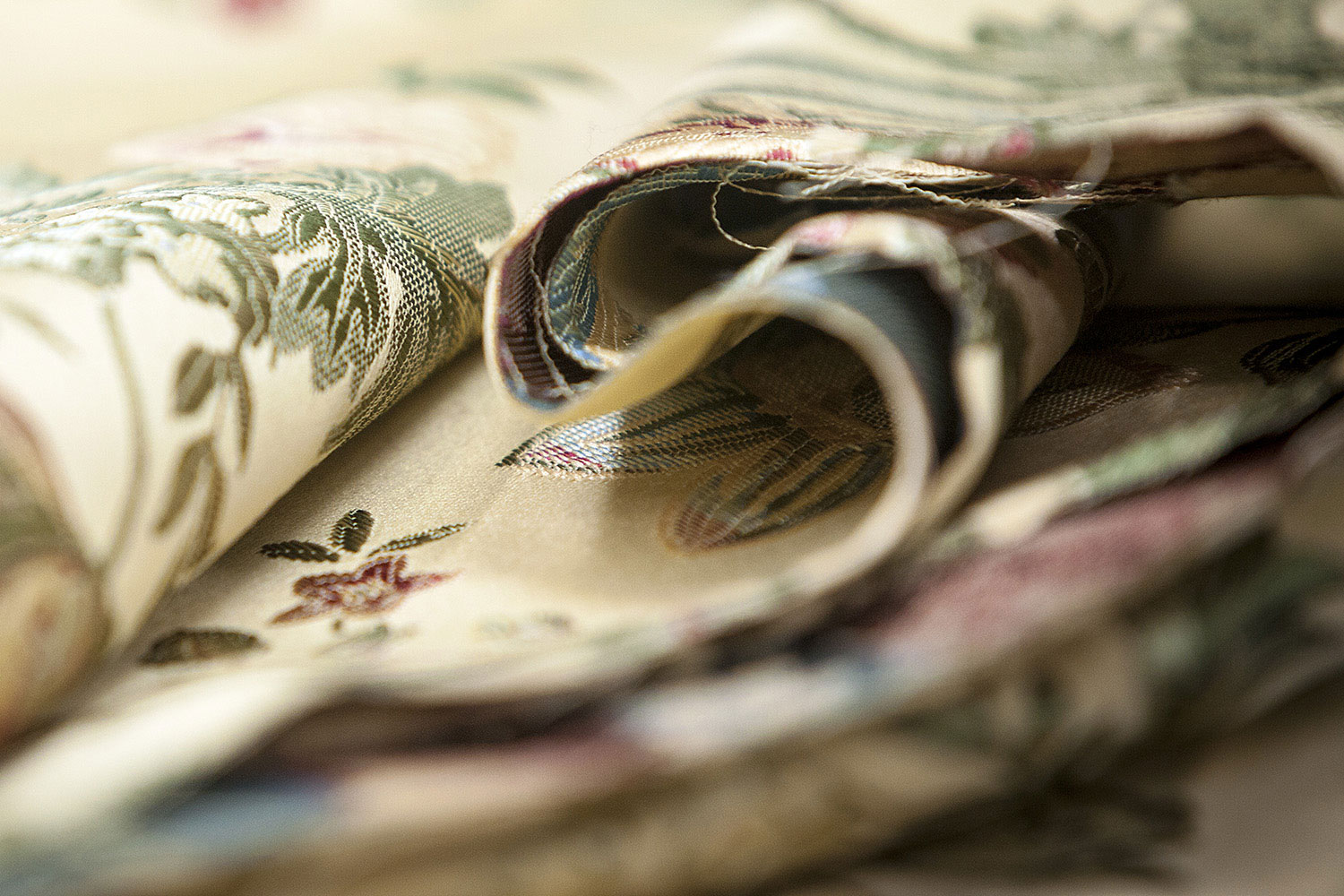
Thanks to its brightness, silk has always been used as a sign of luxury. In ancient times only kings, emperors and their courts could afford it, and it was used to demonstrate the aristocratic families’ power, who used silk for interior decorations and clothes.
Wearing silk clothes meant having power and being of divine nature until the 19th century, when silk production underwent an acceleration, spinning mills spread in the cities and silk became a precious material for the emerging middle class too.
In the 18th century, around 1776, King Ferdinando IV of Bourbon founded the “Reale Colonia di San Leucio” and called upon the best weaver masters, as he wanted to produce a kind of silk that was supposed to be better than the silk produced in Lyon, which was considered to be the best silk in the world.
It was a true marketing operation.
The king’s goal was to produce the best silk fabric in terms of quality and create an excellent production centre in his kingdom. This centre was close to the magnificent Reggia di Caserta, to supply his court, and near Naples as it was an important commercial trade.
In order to do this Ferdinando IV didn’t just call upon the best Italian and French weavers to teach “the art of weaving”, but also gave a loom to all the families in his kingdom.
In a short space of time, San Leucio became a place of weaving excellence, an industrial and social archeology experiment, an ideal city built around the “royal house-spinning mill”, that was called FERDINANDOPOLI. The fame of the precious goods made by theSan Leucio royal silk factory spread throughout the courts all over the Europe.
Such fame increased at an incredible rate and silk production continued without interruption, twenty-four hours a day, to meet not just the demand of the Bourbon kingdom, but also the demand from other kingdoms.
San Leucio silk became the most important and sought-after silk in every royal court.
Historical events, civil and industrial revolutions have changed kingdoms and life-styles over the centuries, but San Leucio has withstood the test of time up to the present day. Some of its factories are still operating, although only very few of course. These factories have been a family inheritance since 1700, the same families that owned the original looms used in the past with all its complex mechanisms, such as the rounded twister or the silk mill. Still today, San Leucio works to provide silk for the Vatican, the White House, Buckingham Palace and other royal houses.
